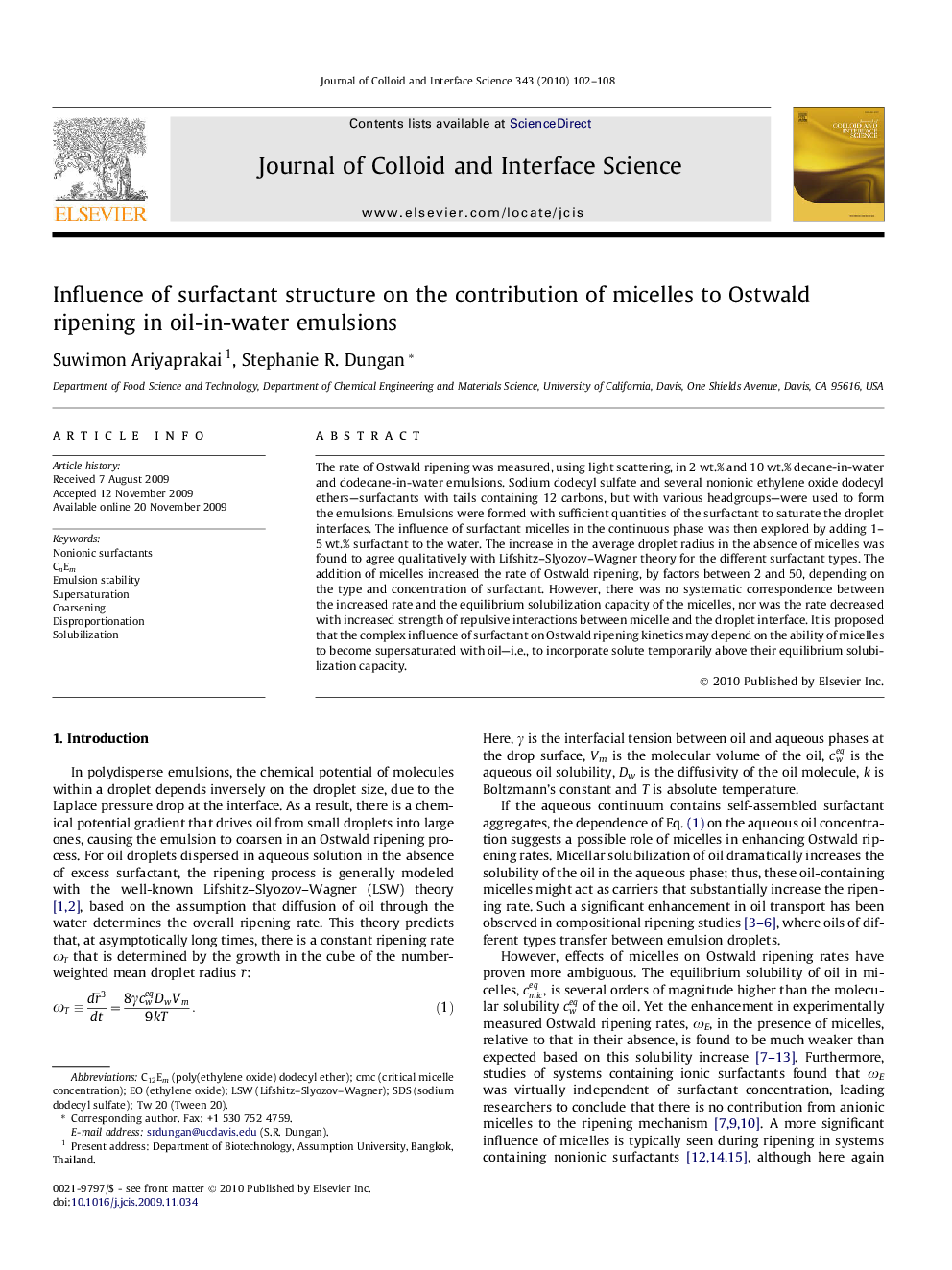| Article ID | Journal | Published Year | Pages | File Type |
|---|---|---|---|---|
| 609415 | Journal of Colloid and Interface Science | 2010 | 7 Pages |
The rate of Ostwald ripening was measured, using light scattering, in 2 wt.% and 10 wt.% decane-in-water and dodecane-in-water emulsions. Sodium dodecyl sulfate and several nonionic ethylene oxide dodecyl ethers—surfactants with tails containing 12 carbons, but with various headgroups—were used to form the emulsions. Emulsions were formed with sufficient quantities of the surfactant to saturate the droplet interfaces. The influence of surfactant micelles in the continuous phase was then explored by adding 1–5 wt.% surfactant to the water. The increase in the average droplet radius in the absence of micelles was found to agree qualitatively with Lifshitz–Slyozov–Wagner theory for the different surfactant types. The addition of micelles increased the rate of Ostwald ripening, by factors between 2 and 50, depending on the type and concentration of surfactant. However, there was no systematic correspondence between the increased rate and the equilibrium solubilization capacity of the micelles, nor was the rate decreased with increased strength of repulsive interactions between micelle and the droplet interface. It is proposed that the complex influence of surfactant on Ostwald ripening kinetics may depend on the ability of micelles to become supersaturated with oil—i.e., to incorporate solute temporarily above their equilibrium solubilization capacity.
Graphical abstractPossible mechanisms of micelle-enhanced transport during Ostwald ripening of emulsions.Figure optionsDownload full-size imageDownload high-quality image (50 K)Download as PowerPoint slide
